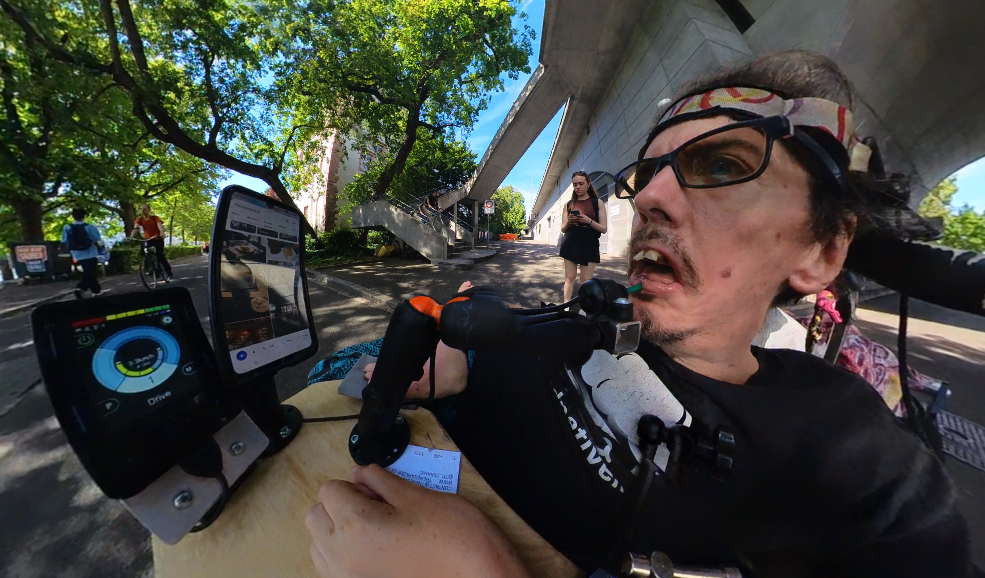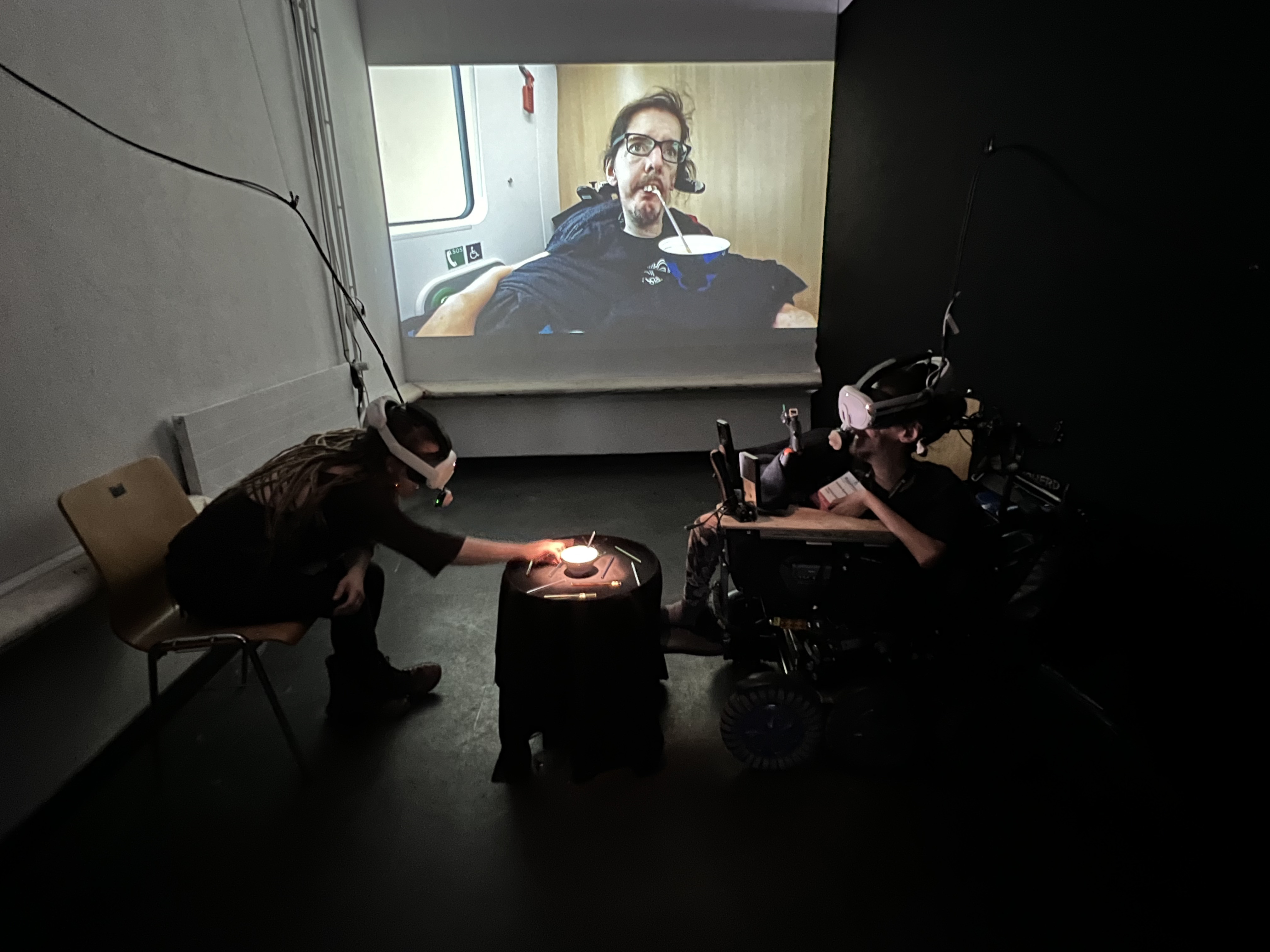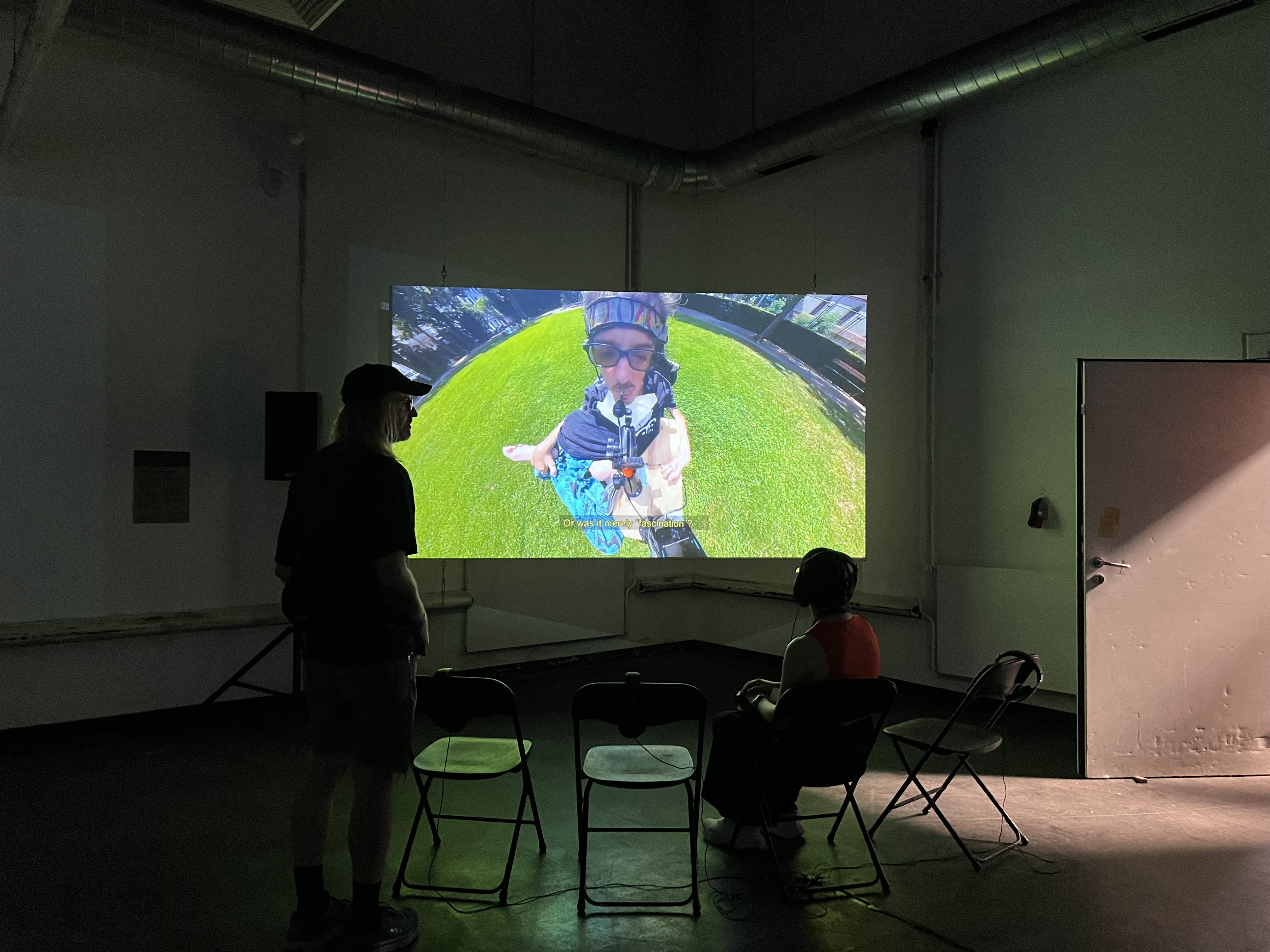Crip Sensorama: Christian's coffee
This is the second version of Crip Sensorama titled, Crip Sensorama:Christian’s Coffee exhibited at Ars Electronica Festival for Art, Culture and Society in Linz, Austria. This version has been possible with care and support of my friends and collaborators Yesica Duarte, Christian Bayerlein and Eric Desrosiers.
Christian and his coffee
Christian Bayerlein is an artist, technologist, and activist who has Spinal Muscular Atrophy (SMA) due to which he has almost no movements in the upper and lower parts of his body. In his late 40’s, Christian is a hacker and maker and he uses technology as a tool for activism around disability, as he writes on his website “I fight for the rights of disabled people, e.g. for better accessibility or the right to live in the community”. Christian loves to travel around the world in his wheelchair which is driven using an integrated self-hacked Mo-vis joystick that he controls using his mouth.

For context, disabled activist, technologist and artist, Christian Bayerlein begins his day by lying on bed or in his wheelchair with a coffee. Since he doesn’t require a handle to hold the cup, his coffee cup is custom made without handle and comes with a straw. Christian’s partner/caretaker prepares the coffee and puts it beside him, which he drinks and sips slowly (sometimes for more than 30 minutes) using a straw. We dwell on this simple act of drinking a coffee using a straw as an artistic device to stage this experience.
Experience
The audience (in pairs) are invited to enter a dimly lit room, illuminated by the light from a video projection on the wall at the opposite end. The video shows Christian drinking coffee from his favorite cup using a plastic straw. Encountering him, resting in his wheelchair, slowly drinking his coffee in a fast-paced train (noticeable as one sees rushing landscape through the window beside Christian) the audience also find themselves in a physical set up consisting of two chairs and a coffee table in between them.

The physical set up is arranged so that audience do not face Christian but sit next to him while facing each other. The visitors are then asked to take the seats (opposite each other and separated by the coffee table) with Christian’s video playing besides them on the wall. On the coffee table lies Christian’s coffee cup with multiple straws scattered around it. Mounting the XR headsets onto the audience members (integrated with our modified lip and mouth tracker) activates the XR experience, staged in three acts: the extra-ordinary, the ordinary and the infra-ordinary.
ACT 1
The extra-ordinary, that is act 1, situates the audience inside a virtual mouth, with a perspective that they are on a slimy tongue that leads them not to the inside of the body but to another mouth – representing the other audience members’ mouth (sitting opposite) but responding to one’s own mouth movements. Following the prompts which instruct them to move their lips, tongue, and cheeks, the visitors navigate, move and rotate inside this visceral organ in this first act – encountering the organ which is taken for granted but is a crucial entity in the everyday life of Christian and Eric who use their mouth to paint, use computers and phones, and drive their wheelchairs.
ACT 2
In Act 2, “The Ordinary”, both visitors are prompted to open their mouths (through the statement “Keep your mouth open to encounter the ordinary”). This activates the HMD’s video passthrough mode - which enables the wearer to see the physical space (through a live camera feed inside the headset) or space of mixed reality. The act of keeping one’s mouth open to continue seeing the physical space (through the device) intentionally gives the visitors a choice to adjust their chin, tongue and jaw movements to that of Christian. Witnessing the ordinary, such as a coffee cup or Christian drinking coffee beside them, the visitors adjust the mouth gestures which then activates Christian’s narration about his everyday life and his coffee. The narration is heard in Christian’s ’non-normative’ muffled voice (due to his disability), which repeats if one closes their mouth, echoing the way many able-bodied people often ask Christian to repeat himself due to difficulties understanding his speech.
ACT 3
Sharing how the very act of drinking a cup of coffee can be also performed by a disabled body, Christian invites the audience into the final act – the ‘infra-ordinary’. Resonating George Perec’s concept of the infra-ordinary (1973), this act lets the visitors to question the banal, as they pick up one of the straws from the table to reflect on how the ‘ordinary acts’ (drinking coffee), objects (a straw), or the sensation of the mouth opening and closing - are often left unnoticed and yet - carry different meanings depending on one’s lived experience.
Later the audience goes through what I call “a cleansing” where they watch a 7-8 min video essay. This self-reflective video essay is what brings the audience into an encounter with similar feelings as they witness a “tiny planet” video ( a 360 video configuration style) that morphs and choreographs disabled bodies within their everyday environments. This imagery is layered with a voiceover that contradicts itself, estranges itself — slowly revealing the speaker’s able-bodied position. Asking: Have you ever been in a close encounter with a disabled body?
